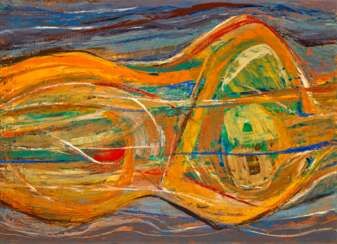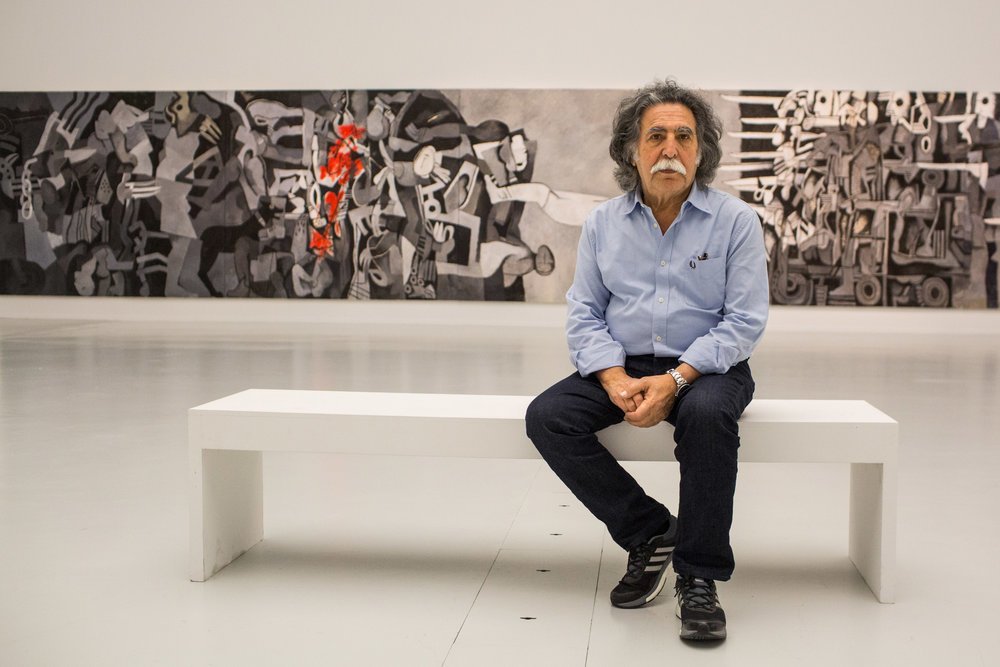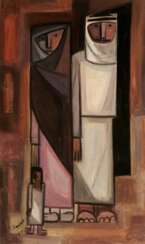
Middle Eastern 20th and 21st Century Art

Helen Khal was an American artist and critic of Lebanese descent. She started her painting career at the age of 21. She held her first individual exhibition in 1960 in Galerie Alecco Saab in Beirut. Her other one-woman shows took place at Galerie Trois Feuilles d'Or, Beirut (1965); Galerie Manoug, Beirut (1968); at the First National Bank, Allentown, Pennsylvania (1969); in Kaslik, Lebanon (1970); at the Contact Art Gallery, Beirut (1972, 1974 and 1975) and at the Bolivar Gallery in Kingston, Jamaica in 1975. Her work also appeared in the Biennales of Alexandria and São Paulo. She also taught art at the American University of Beirut from 1967 to 1976 and at the Lebanese American University from 1997 to 1980. She inspired many other artists. Helen Khal was also recognized as an author and critic. "From 1966 to 1974, Helen Khal was Art Critic to two Lebanese periodicals, The Daily Star and Monday Morning.
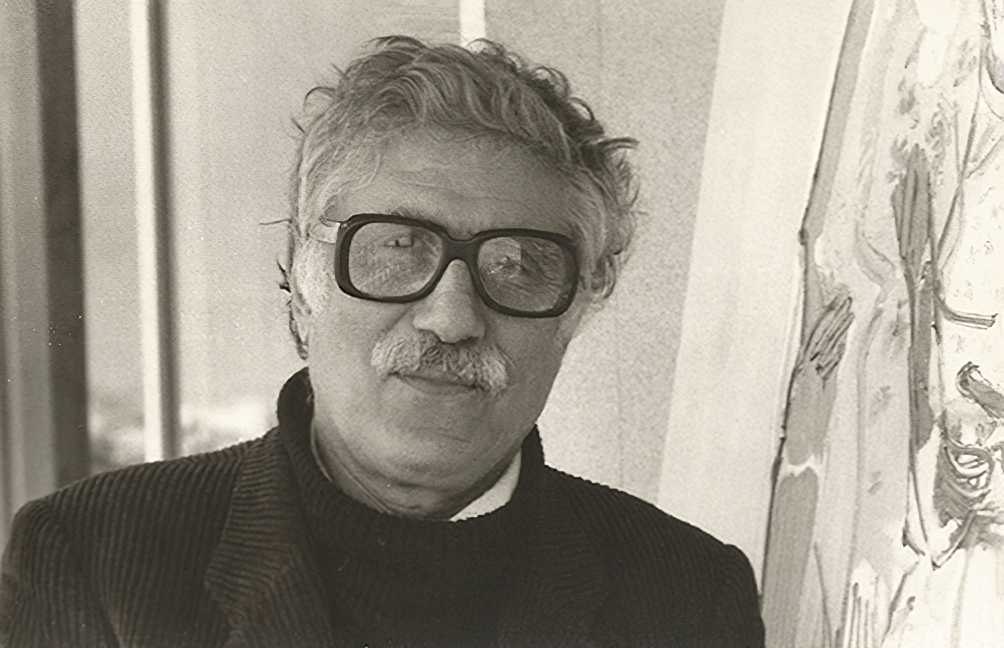
Paul Guiragossian (Armenian Պոլ Կիրակոսյան) was a Lebanese artist of Armenian origin.
Paul Guiragossian is known as the author of many portraits and landscapes. He is also known for his paintings about the life and life of Armenians in migration.

Paul Guiragossian (Armenian Պոլ Կիրակոսյան) was a Lebanese artist of Armenian origin.
Paul Guiragossian is known as the author of many portraits and landscapes. He is also known for his paintings about the life and life of Armenians in migration.
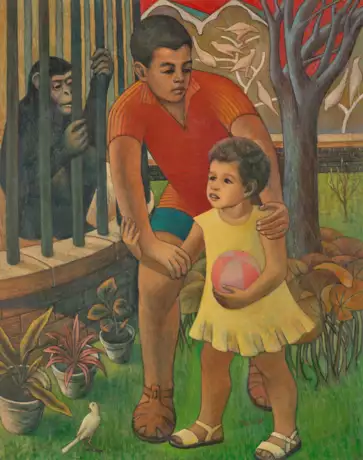
Hamed Ewais is an egyptian artist. Ewais graduated from the Cairo’s School of Fine Arts in 1944, later he continued his studies at the Royal Academy of Fine Arts of San Fernando in Madrid, returning to teach at the Faculty of Fine Arts in Alexandria. Ewais was of the founders of the Group of Modern Art in 1947 along with several artists. In 1956, he was awarded the Guggenheim International Prize. Influenced by key figures of Mexican muralism such as Diego Rivera and David Alfaro Siqueiros, Ewais chose to work in an aesthetic style that reflected his socialist political leanings. As one of Egypt’s leading social realist painters, Ewais highlighted the plight of the country’s working class and was a proponent of Nasser’s Pan Arab movement.

Hamed Ewais is an egyptian artist. Ewais graduated from the Cairo’s School of Fine Arts in 1944, later he continued his studies at the Royal Academy of Fine Arts of San Fernando in Madrid, returning to teach at the Faculty of Fine Arts in Alexandria. Ewais was of the founders of the Group of Modern Art in 1947 along with several artists. In 1956, he was awarded the Guggenheim International Prize. Influenced by key figures of Mexican muralism such as Diego Rivera and David Alfaro Siqueiros, Ewais chose to work in an aesthetic style that reflected his socialist political leanings. As one of Egypt’s leading social realist painters, Ewais highlighted the plight of the country’s working class and was a proponent of Nasser’s Pan Arab movement.

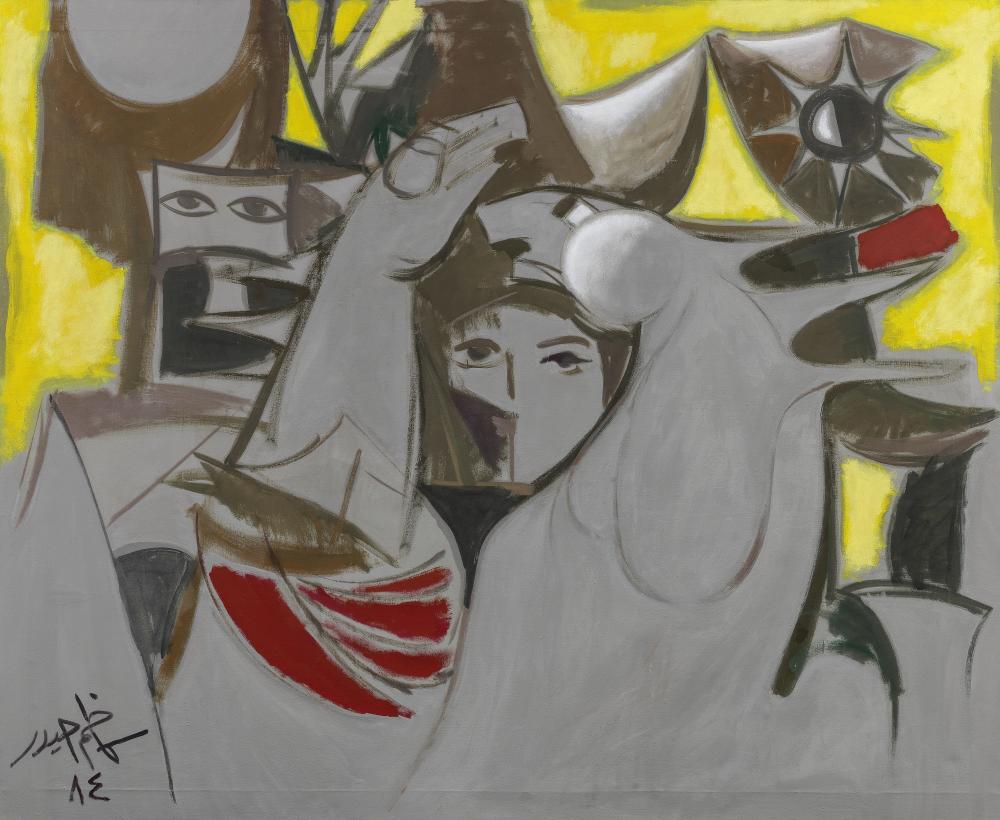
Kadhim Haydar was a highly respected Iraqi artist, poet, author, stage-set designer and educator who, as part of the first generation of modern Iraqi artists, had a major influence on the direction of modern Iraqi art. His artworks are noted for their use of symbolism, myth and poetic allegory within a contemporary framework. His earliest works drew inspiration from the suffering of the Iraqi labourer. He presented workers as heroes with well-developed musculature, chiselled features and an imposing presence as they faced their daily struggless. His later work sought to combine his passion for Iraqi literature, poetic allegory, symbolism and abstraction into works that were primarily narrative and dealt with themes of good versus evil. For instance, he employed ancient aesthetic principles such as repeating geometric patterns derived from ancient Mesopotamian art traditions. He also included poetry in some of his artworks.



Lorna Selim was an English artist and art teacher, who married prominent Iraqi sculptor Jewad Selim, relocating to Baghdad with him in 1950. She was a practising artist for much of her life up until her death. Selim contributed to the arts community in Iraq through her exhibitions, teaching and active participation in arts groups for twenty years. After her husband's premature death in 1961, she was part of the team responsible for completing his iconic monumental work, entitled Nasb al-Hurriyah. She was a capable and influential artist. She is consistently listed as an Iraqi artist from the pioneer generation.

Lorna Selim was an English artist and art teacher, who married prominent Iraqi sculptor Jewad Selim, relocating to Baghdad with him in 1950. She was a practising artist for much of her life up until her death. Selim contributed to the arts community in Iraq through her exhibitions, teaching and active participation in arts groups for twenty years. After her husband's premature death in 1961, she was part of the team responsible for completing his iconic monumental work, entitled Nasb al-Hurriyah. She was a capable and influential artist. She is consistently listed as an Iraqi artist from the pioneer generation.



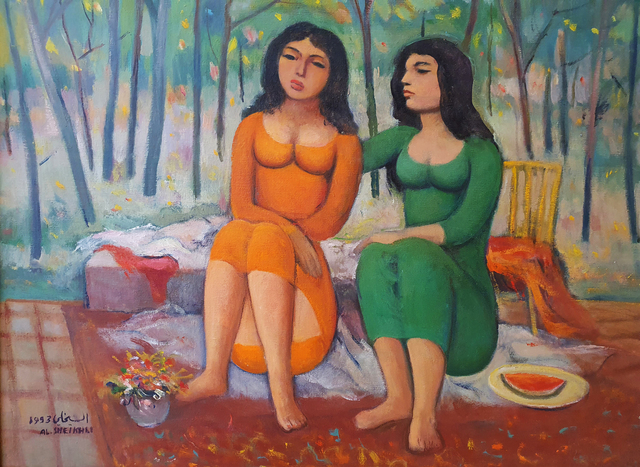
Ismail Al-Sheikhly is a contemporary Iraqui artist. He belonged to one of the first art groups to appear in Iraq, 'La Societe Primitive', founded in 1950. The group later changed its name to 'The Pioneers' and kept it into the 1970s. Some of his works are influenced by Cubism, a movement which grew in popularity throughout the 1950s, and was the preferred artistic style of one of Al-Sheikhly's important contemporaries, Hafiz Drubi. Al Sheikhly’s early works are inspired by the Iraqi village life, though his later works are more focused on abstracted colour combinations and obscured backgrounds. Women feature highly as a central theme in his work. Painted in groups quite often, Al Sheikhly’s women are streamlined with oval faces and generic bodies and seem to always be in states of coming and going, whether that be to the mosque, to the souks, or to do some domestic task.

Ismail Al-Sheikhly is a contemporary Iraqui artist. He belonged to one of the first art groups to appear in Iraq, 'La Societe Primitive', founded in 1950. The group later changed its name to 'The Pioneers' and kept it into the 1970s. Some of his works are influenced by Cubism, a movement which grew in popularity throughout the 1950s, and was the preferred artistic style of one of Al-Sheikhly's important contemporaries, Hafiz Drubi. Al Sheikhly’s early works are inspired by the Iraqi village life, though his later works are more focused on abstracted colour combinations and obscured backgrounds. Women feature highly as a central theme in his work. Painted in groups quite often, Al Sheikhly’s women are streamlined with oval faces and generic bodies and seem to always be in states of coming and going, whether that be to the mosque, to the souks, or to do some domestic task.
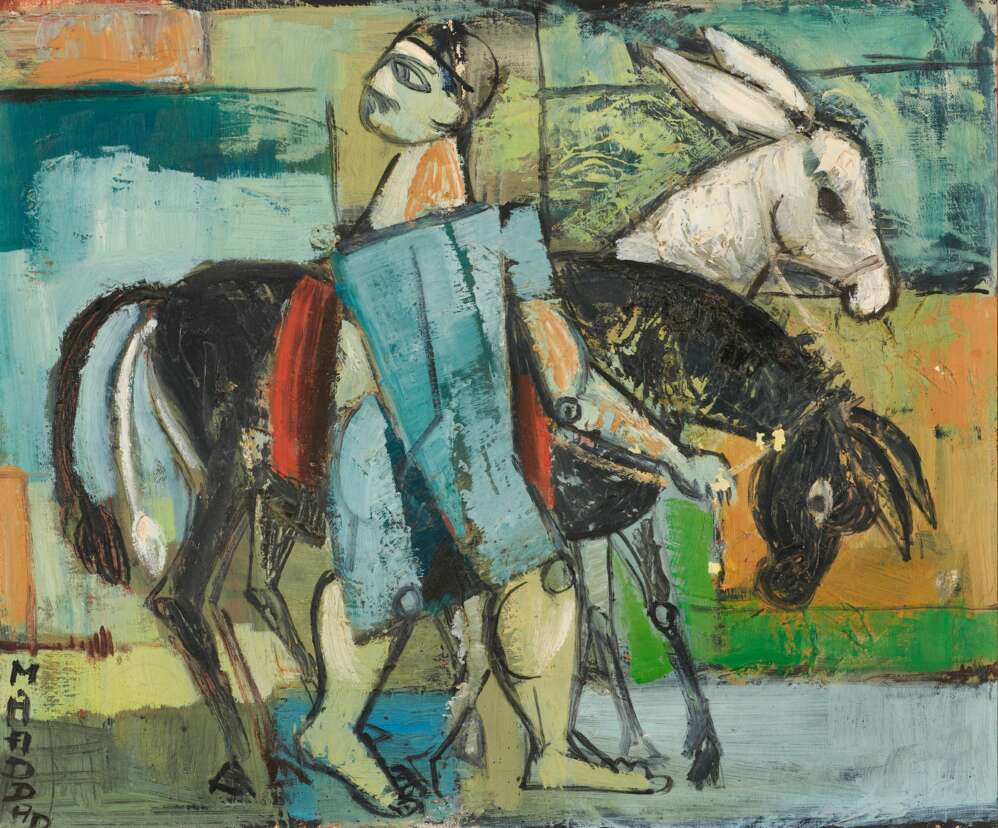
Haddad Maurice is a contemporary painter from South Iraq. Encountering the work of Haddad Maurice for the first time, one can not help noticing the diversity of his compositional approaches, his media and materials. There are water color paintings that at first sight seem almost conventional, but that bear witness to an awareness of country life, sharp observation, an ability to catch moods. The works showing Iraqi women, real beauties, one might say, are close to folk art: bright, colorful, geometrical, and basically well-balanced in their formal language that relies on curves, segments of circles intercutting each other. Some works are mythological both in their formal language and their historical reference. In the case of these works, often wood instead of canvas is used as a surface.

Saad Al-Tai is a contemporary Iraqi artist. He participated in several exhibitions in Baghdad and abroad. Al-Tai was a member of the Iraqi Impressionists Group. Despite the name of the group, Al-Tai was not categorically an impressionist, rather his style lent more towards cubist realism. For him, the colour of the painting was determined by its subject matter. Al-Tai is an award winning artist who, amongst other things, received Italian knighthood in 2005 in recognition for his efforts in fostering Iraqi-Italian cultural dialogue including founding and heading the Italian Language Department in 2002 at the College of Languages, Baghdad University.


Saadi Al-Kaabi is a contemporary artist born in Najaf/Iraq held many solo exhibitions and participated in several exhibitions in Baghdad, Paris, Rome, new York, Moscow, Stockholm, Berlin, Prague, Beijing, Ankara, and all the Arabic countries.

Mohamed Melehi was a Moroccan painter associated with the Casablanca school, a modernist art movement active in the 1960s in Morocco. Melehi became a professor at the School of Fine Arts of Casablanca, teaching painting, sculpture, and photography. In 1969, Melehi and his colleagues of the Casablanca school organized an exposition-manifeste, or protest exhibition, entitled Présence plastique. The artists displayed their works in Jemaa el-Fnaa in the Marrakesh medina, snubbing an official Moroccan art salon of happening at the same time. This exhibition is regarded as the founding moment of modernism in Morocco.




